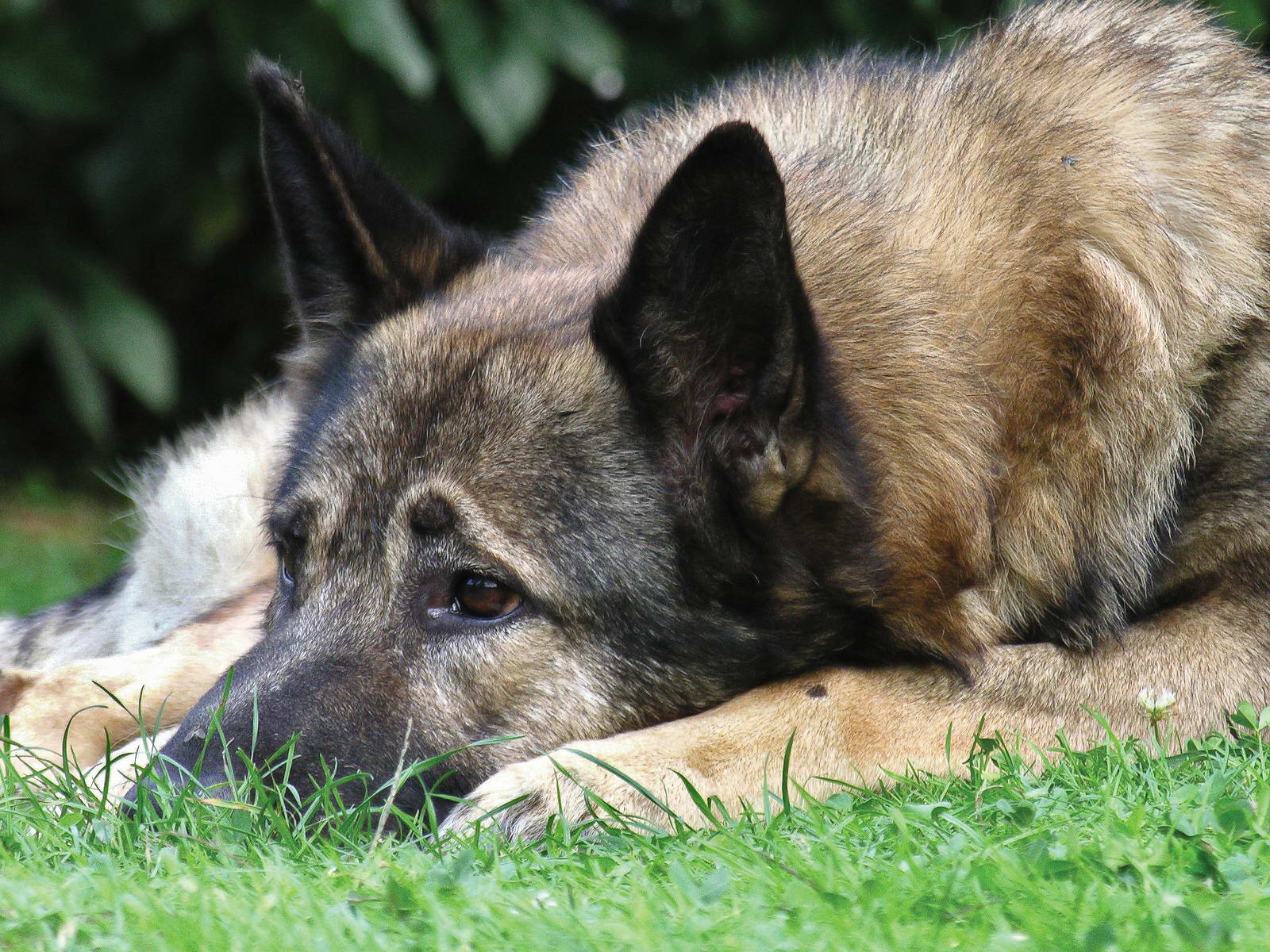Picture this: your beloved companion chews your favorite shoes while you’re at work. When you return home, the natural instinct might be to scold them harshly. That moment of destruction becomes a crossroads where many dog owners choose punishment over understanding. The truth is, that pair of shoes tells a story your dog desperately wants to share with you about their emotional world.
Punishment isn’t a very clear process for dogs, with them easily misconstruing what they’ve done wrong. Punishment can also be degrading to your dog, leaving them detached and unmotivated. The shift from punitive methods to compassionate understanding isn’t just about being kind to your furry friend. It’s about recognizing that behind every so-called “bad behavior” lies a dog trying to communicate something important about their physical or emotional state.
The Hidden Language of Stress: Reading What Your Dog Really Tells You

However, our dogs do not voice their feelings, slam down the phone, or have a tantrum, so how can we tell they are stressed? The signs of anxiety in dogs are often subtle and can easily be misinterpreted unless the full context is understood. Your dog is constantly speaking to you through subtle body language signals that most owners miss entirely.
The most common signs of canine anxiety are trembling, excessive barking, hiding, panting, pacing, destruction of property, and elimination in the house. These behaviors occur because dogs experience stress and fear in many different situations. That annoying excessive barking isn’t defiance. Panting, especially when it isn’t hot, is another sign of stress or anxiety. Many dogs will pant when they are hurt or sick as well as when they are afraid.
Yawning, especially frequent yawning is a sign of stress in dogs. Excessive Licking – Dogs lick for a lot of reasons but when that licking becomes excessive, it usually means there is a problem Licking triggers the dog’s brain to release endorphins which ease anxiety and make them feel better. Sometimes the most concerning behaviors are attempts at self-soothing in a world that feels overwhelming to them.
Why Traditional Punishment Fails: The Science Behind Fear-Based Training

Because of the way punishment is often used, it comes with multiple potential fallouts, like a statistical increase of fear-based behaviors and probability of aggression. When we punish dogs for behaviors we don’t understand, we’re essentially shooting the messenger. The underlying emotional state that drove the behavior remains unchanged, and often intensifies.
If you make a mistake at work, physical aggressiveness or yelling by your boss leaves you feeling ashamed, degraded, and unmotivated. A more constructive conversation that addresses the root of the problem and a solution to avoid it from happening again leaves you feeling relieved, grateful, and motivated. Giving your dog negative versus positive reinforcement has the same results.
Punishment training uses fear and discomfort to teach a dog. Sure, it can work. But you can also end up with a dog who’s fearful and anxious, with a bit of dog PTSD. Think about your relationship goals with your dog. But I’d much rather have a friend in the end and not someone who obeys because they’re afraid of what I’ll do to them.
Understanding Triggers: What Really Drives “Problematic” Behavior

Dog anxiety occurs when your pup’s negative experiences turn into fear of new people, animals, experiences, places, and separation from family members. Many dogs show signs of anxiety only in specific situations, while other dogs seem generally anxious, showing fearful reactions in a wide range of situations. Understanding what triggers your dog’s behavior is like having the key to their emotional world.
Some dogs may become anxious when their routine is disrupted or are left alone for extended periods. Other conditions that can cause canine anxiety include medical conditions that cause pain or discomfort, loud noises such as fireworks or thunderstorms, and changes to their environment or physical condition. That shoe destruction might happen because your departure routine signals hours of loneliness ahead.
Dog owners should also reflect on their own behavior to see how they might be contributing to the stress. Some ways owners might make their dogs stressed include not giving clear commands, staring directly at them, or punishing them unnecessarily. Sometimes we unknowingly create the very problems we’re trying to solve. Recognizing these patterns helps us become better partners to our dogs.
The Power of Positive Communication: Building Trust Through Understanding

Using positive reinforcement is the most effective way to communicate with your dog, unlike negative reinforcement which can result in your dog becoming fearful of you. Dogs are very eager to please their owners, and positive reinforcement lets them know their behavior was good and gives them a solid indication of how to keep making you happy. When we shift from punishment to understanding, we open up entirely new possibilities for connection.
Positive reinforcement training helps and improves the human-dog relationship. This is done by understanding a dog’s motivations, using rewards to motivate a dog, creating a good association with people through those rewards, and never causing pain or fear. Your dog wants nothing more than to understand what you need from them.
Because dogs don’t speak human language, the only way to truly comprehend and communicate with them is for us to learn what they’re telling us through their body and vocal language. Dogs communicate using a complex language of body signals that reflect what they’re thinking and feeling. They use these signals to communicate intent, as an attempt to increase or decrease distance from something or someone, and as a way of showing their comfort or discomfort.
Decoding Body Language: Your Dog’s Silent Conversations

Your dog is “talking” to you all the time. If you learn what your dog is saying, you will develop a deeper bond of trust and respect. Plus, your newfound understanding of your dog’s emotional state can help you predict their behavior and prevent problems before they arise. Every tail position, ear angle, and eye expression carries meaning that can transform your relationship.
While every dog will have their own unique nuances to their communication style, most dogs rely on similar postures to convey how they’re feeling. When reading a dog’s body language, it’s important to note that the dog’s entire body plays a role in signaling; for example, a wagging tail doesn’t necessarily mean that a dog is happy or relaxed, especially if the rest of their body is stiff. Everything from your dog’s ears and the expression on their face to the placement of their feet and tail works together to help communicate your dog’s emotional state.
Lip-licking is another bit of dog body language that people often misinterpret. Just like people, dogs will lick their lips after a delicious meal, but they’ll also do it when they feel anxious. Rather, it’s a sign of discomfort with a given situation. Learning these subtle signals helps you respond to your dog’s needs before stress escalates into unwanted behaviors.
Creating Safe Spaces: Environmental Management for Emotional Well-being

It is also important to provide your dog with a safe place in the home where they can escape stimuli that trigger a stress response. Everybody enjoys a calm place to retreat. Environmental management isn’t about restricting your dog’s freedom. It’s about creating conditions where they can succeed emotionally and behaviorally.
In a positive reinforcement training program, an owner sets up and manages the dog’s environment and interactions in ways that limit the dog’s options. He is more likely to engage in desirable and appropriate activities, and these managed options are rewarded. It teaches the dog which behaviors “work”. He is motivated to behave in ways that have a reward history, and he will repeat them.
The first step is to avoid situations that cause your dog to become anxious. You don’t want them to suffer more than they already are, and each time their anxiety is triggered, it reinforces their behavioral response. In layman’s terms, it’s a chance for them to “practice” those stress-driven behaviors you’re trying to reduce. Prevention becomes the most compassionate form of training.
Building New Pathways: Positive Solutions for Common Challenges

Positive reinforcement is how people and dogs learn naturally in real life. When we feel rewarded by something we do, we want to do it again. Eventually, it becomes a habit. We have a neurotransmitter named dopamine. It’s a feel-good chemical that helps the brain create a pathway between a trigger (like a dog command) and an action (like a dog trick) Positive reinforcement training leverages this natural habit-forming process to teach dogs “good habits.”
Positive reinforcement training aims to address and lower the dog’s stress, which is key to then training more positive, appropriate and safer behaviors. Instead of fighting aggression with aggression, a qualified positive trainer is able to truly change the way a dog feels about a situation, for the rest of his life, not just the way the dog is acting at that moment. True behavior change happens at the emotional level, not through suppression.
Build trust – it goes both ways. They trust you to act a certain way, and you trust them to follow commands. Strengthen your bond – Your dog learns that pleasing you earns them treats and praise. They become cooperative, and you can do more bonding activities together, like going to a dog-friendly cafe or hiking off-leash at the trail.
The Journey from Reaction to Response: Practical Steps Forward

The best way to calm your dog down is to identify what is stressing them, then eliminate the trigger. Alternatively, work with a professional trainer or your veterinarian to reduce their response to the trigger. Moving from reactive punishment to thoughtful response requires patience with yourself as much as with your dog. The transformation happens gradually as you both learn new ways of communicating.
Science-backed, positive reinforcement training. Use a reward-based method to encourage behaviors you want to see. Start small by identifying one behavior that typically triggers your frustration. Instead of focusing on stopping that behavior, think about what you’d prefer your dog to do instead. While positive training methods take repetition, they’re the most effective and build the best relationship between you and your dog.
Training your dog not only establishes clear communication and reinforces good behavior, but also provides them with a sense of structure and confidence, which can help reduce anxiety. Regular physical activity is not only essential for a dog’s physical health but also plays a significant role in reducing stress by releasing pent-up energy and promoting relaxation. Remember that every positive interaction builds the foundation for a stronger, more trusting relationship.
Every dog deserves a guardian who sees beyond the surface behavior to understand the emotional being underneath. Reading, understanding and responding to your dog’s body language is a key part of the companion-to-owner relationship. By understanding their cues and appropriately advocating for your dog, owners can continue to ensure their dogs remain happy, comfortable and safe. When we stop punishing and start understanding, we discover that our dogs weren’t being difficult at all – they were simply waiting for someone to listen to what they were trying to say.
What do you think about shifting your approach from punishment to understanding? Share your experiences with us in the comments below.

Andrew Alpin from India is the Brand Manager of Doggo digest. Andrew is an experienced content specialist and social media manager with a passion for writing. His forte includes health and wellness, Travel, Animals, and Nature. A nature nomad, Andrew is obsessed with mountains and loves high-altitude trekking. He has been on several Himalayan treks in India including the Everest Base Camp in Nepal.






